The B&C 2013 Next Wave of Leaders

RELATED: Next Wave of Leaders Alums: Where Are They Now?
Excellence in the television business tends to stand out. It is often quantifiable, revealing itself in everything from a spectacular quarter to a killer debut season to waves of success that no one saw coming.
What is often a lot more subtle than excellence -- and yet also more crucial to identify and nurture in the constantly evolving industry -- is an ability to lead. And we don't mean in the traditional top-down sense of CEO leadership. No, we're talking about the class of prime movers of the business who are just now emerging and asserting their abilities and potential. Therein lie both the challenge and the satisfaction of our annual Next Wave of Leaders issue, culled from virtually all industry corners -- digital, local stations, advertising sales, programming, marketing and more.
We have been doing this for enough years now that we have been able to shine a light on a range of folks who keep leading and keep climbing. But no matter where they end up tomorrow, the 2013 Next Wave of Leaders has plenty to tell us about the business of today.
Albert Cheng
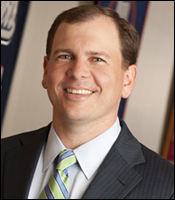
Justin Connolly
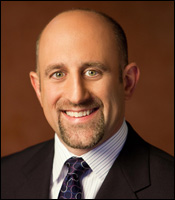
Scott Felenstein
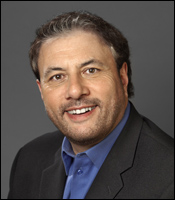
Gary Levine
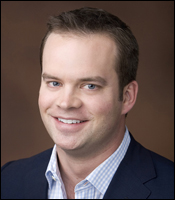
Mike McCarley

Angelica McDaniel
The smarter way to stay on top of broadcasting and cable industry. Sign up below
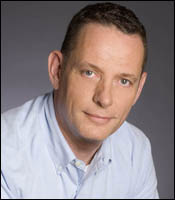
David McKillop

Milo Medin
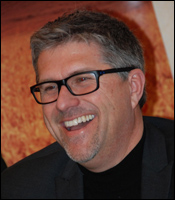
Kerry Oslund

Amanda Richman
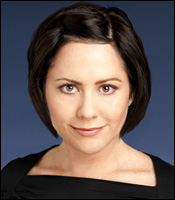
Shannon Ryan

Frank Sgrizzi
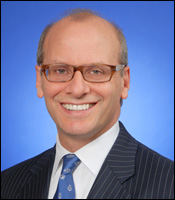
Jon Steinlauf
Albert Cheng
Executive VP/chief product officer, digital media, Disney/ABC Television Group
Albert Cheng led an industry milestone in May with the launch of the Watch ABC app. It marks a new high point for efforts by broadcasters to capitalize on the massive consumer adoption of mobile devices and fend off threats from companies such as Aereo. It also shows why Cheng merits a spot on B&C's Next Wave roster.

The app is designed to make complete streams of local ABC affiliates -- including national, local and syndicated programming -- available to subscribers of multichannel operators that have inked TV Everywhere deals with Disney/ABC. The streams are currently only available from ABC's owned stations in New York and Philadelphia but are scheduled to expand in coming months.
"There has been a lot of debate about mobile advertising going too slow, but with Watch ABC we are monetizing every piece of viewership on mobile very effectively," with a dual revenue stream of multiplatform advertising and fees from operators, Cheng says. "It is an important milestone in our overall video roadmap of driving toward TV Everywhere."
The creation of the Watch ABC app isn't the first time Cheng's tech and developer teams have been riding new trends to keep Disney/ABC a leader in the digital space. In the time since Cheng assumed his current role in fall 2005, ABC became the first broadcast network to put full ad-supported episodes available for free online; the first to put full episodes available on-demand on a mobile platform; the first to stream episodes in HD; and the first to launch live streams of entertainment networks with its Watch Disney and other apps.
Throughout, Cheng has run a lean in-house operation that is something of a model for rapid innovation inside a very large media and entertainment giant. But the breakneck, five-week launch schedule for Watch ABC involved a lot more than technical innovation. To launch a 24/7 feed from a local station, many different divisions of the company as well as cable operators and syndication partners had to be involved. "Literally every part of the company was touching this to get it done so quickly," Cheng says.
--George Winslow
↑ Back to top
Justin Connolly
Senior VP, College Sports Networks, ESPN
As the key architect of long-term carriage deals with Time Warner Cable and Comcast, Justin Connolly has spent much of his time making sure viewers never lose their favorite sports network. Last December, after spending 10 years overseeing all of Disney and ESPN Media networks' negotiations and carriage agreements, Connolly moved over to the content side as senior VP of college sports networks. He now leads programming efforts for the Longhorn Network, a joint venture between the University of Texas and ESPN (for which he secured a national deal with Verizon), as well as the upcoming SEC Network.

Since joining ESPN in 2003, Connolly has served as director, ESPN strategy and operations; VP, distribution strategy; and his most recent senior VP gig. "There are a whole lot of things that are common for the two areas," Connolly says of moving from business to content. "Probably first and foremost is just problem-solving."
Connolly will use those particular skills as he works to get carriage for the SEC Network, which as of presstime only had charter affiliate AT&T on board. The Longhorn Network, meanwhile, has struggled to get carriage since its August 2011 launch, but Connolly sees improvement on the horizon. "We continue to have conversations with [distributors]," he says.
The SEC Network will present more than 1,000 events annually including football, basketball and Olympics-style sports, with 450 on television and the balance on digital platforms. "Putting that content on a single network and making it available to broad audiences across the country is really the fuel behind the fire here," he says.
Connolly does not label himself as a micromanager but instead believes that it's a people business: Hire the right crew and everything works out in the end.
"[It's] about putting together a group of people with functional expertise and allowing them to do what they do best," says Connolly. It's that group of people that he leans on as he continues to learn the ropes of his new gig. "It's been a great opportunity for me," he says, "and a tremendous learning curve."
--Tim Baysinger
↑ Back to top
Scott Felenstein
Executive VP, ad sales, Discovery Communications
When Discovery Communications reorganized its ad sales teams in February, Scott Felenstein was assigned to the male-skewing channels: Discovery, Science, Velocity, Destination America and Military Channel. It made sense. Earlier in his career, he sold sports at CBS. At home, he has three sons. "I live in a heavy testosterone environment," says Felenstein, who earned a promotion to executive VP in the reorganization.

The SUNY at Albany graduate knew early on he wanted to get into advertising and wallpapered his room with rejection letters from ad agencies and media companies. He almost got his dream job, as assistant account manager for Madison Square Garden, working with the Knicks and the Rangers, but the entry-level position went to another candidate with two years' experience.
Eventually Felenstein got a job at Young & Rubicam, where he learned the basics, then decided he'd be more suited to sales. "So I took a job at CBS and I kept moving forward," he says.
As he has moved up, "the focus becomes less about you and more about putting together a strong team and putting them in situations where they can be empowered to be successful," he says. "Because the reality is, as a leader, you're only as good as the strong team around you."
Over the last few years, Felenstein's team at Discovery has been working to develop creative ways to get its client brands closer to the content. "That's what they've been asking for," he says. "The advantage that we have is that we own all of our own content. It gives us a unique position to be able to weave our partners into the story lines."
In one recent example, Discovery worked with Volkswagen to turn a Beetle into a fully operational shark observation vehicle for Shark Week. "They were trying to attract more men to the Beetle. And actually it was their best sales month ever," Felenstein says.
Discovery has also been doing more live programming, with projects such as Gold Rush Live and a live episode of Fast and Loud. Felenstein says his background in sports has helped advertisers take advantage of the more engaged audience that turns out for live events.
--Jon Lafayette
↑ Back to top
Gary Levine
Executive VP, original programming, Showtime Networks
There's a fair amount of cajoling, guiding and pleading with producers, writers and actors that comes with the job of a creative TV executive. But Gary Levine, head of original programming at Showtime, says he has been served well by keeping his role in perspective.

"I like to think that I do my job with my ego firmly in check. I think that has been a key to the people who work for me enjoying it, and also to get the best out of the writers and producers that we work with," he says. "If they feel that it's all about the work and not about you, I think people just are much more receptive."
Levine is responsible for the development and creative oversight of all Showtime original series, documentaries, miniseries and specials, including Dexter, Homeland, Shameless, House of Lies and the upcoming drama Ray Donovan. He says the freedom afforded by pay television eliminates a lot of the reasons mistakes get made at most networks -- "the margin for error goes way down" -- and has aided his success as an executive.
Before joining Showtime in 2001, Levine did a stint in the freewheeling Web 1.0 era as president of Icebox, an Internet entertainment company that created original webisodes. He calls the experience of being entrepreneurial and breaking all the rules "great training" for premium cable. "There is a subversiveness to creating shows for the Internet that translated beautifully to coming to Showtime," he says.
And though his track record of success at the network certainly qualifies him as one of television's leading creative executives, Levine says frankly that he doesn't aspire to the headache of budgets and personnel charts that higher management positions bring.
"Is there a way to ride a wave and just keep riding it? I'm exactly at the height of where I want to be, where I'm still purely creative," he says. "The next job up can be creative, but it also brings with it enormous management and administrative responsibilities and headaches. I have steadfastly stayed just under that level my entire career."
--Andrea Morabito
↑ Back to top
Mike McCarley
President, Golf Channel
Since Mike McCarley was named president of the Golf Channel, the network has put some impressive scores on the leaderboard. Two consecutive years of record ratings. A first quarter of 2013 that was the network's most-watched ever. And status, per Nielsen, as the fastest-growing network among those with at least 80 million U.S. homes.

His secret: thinking big.
"It's not just a television product, it's also a lifestyle," says McCarley, who touted his channel's digital efforts as a main driver of viewership. "A lot of our digital products are focused on instruction."
With golf, McCarley argues, viewers really can play just like the pros -- or at least try to. "[After] watching a baseball game, you're not going to go out the next day and try to hit a 95 mph fastball," he says.
Prior to being named president in February 2011, McCarley teamed with former NBC Sports chairman Dick Ebersol to shepherd extraordinary growth and success during an 11-year tenure at NBCUniversal. One major feather in McCarley's cap was NBC Sports' highly successful "Big Event" strategy.
"I really brought and borrowed [the strategy] from what I was doing from a marketing standpoint at NBC Sports" to Golf Channel, he says.
McCarley oversaw the creation of the interview program Feherty, a showcase for commentator David Feherty, one of the sport's most recognizable personalities. Feherty's premiere became Golf's most-watched original ever.
McCarley is quick to dole out accolades to his Golf Channel team for the network's success.
"On a day-to-day basis you get everyone rallied around a singular vision and create a culture of collaboration," McCarley says. "On days when you don't have live golf, creating compelling programming and expanding those franchises to make them appeal to broader audiences is significant."
--Tim Baysinger
↑ Back to top
Angelica McDaniel
Senior VP, daytime, CBS Entertainment
As senior VP of daytime, Angela McDaniel has breathed new life into CBS' lineup of The Young and the Restless, The Price Is Right, Let's Make a Deal, The Talk and The Bold and the Beautiful by giving time-honored favorites the digital treatment.

"The challenge on those iconic shows is to try new things and to think beyond what we've always done," McDaniel says. "We're always pushing to do things different, to tell a story, to get people talking, to engage our viewers, to add technology. But," she adds, "you still have to be respectful of the history."
A longtime fan of soap operas, McDaniel knows that history as well as anybody. She is the product of a "large, extended Latin family with big, boisterous personalities," who learned early on that the only way she would get noticed was to "learn to tell a good story." That lesson led her to television.
Before joining CBS in 2010 as director of daytime programming, McDaniel handled social media strategy for syndicated shows such as TMZ, Extra and The Tyra Banks Show. McDaniel rose to VP at CBS in 2011 and launched the Emmy-nominated The Talk, the show for which she still starts each morning brainstorming news topics of the day.
The vision behind The Talk, McDaniel says, was to make viewers feel like they were catching up with friends. And CBS' social media outreach has made that even more possible.
In addition to giving the daytime programming block its own Twitter handle -- @CBSDaytime -- McDaniel has invited viewers to choose topics for The Talk, created an all-Twitter episode of Let's Make a Deal and hosted weekly live Twitter chats with CBS stars and executives. She most recently held pre-Emmys chats the week of June 10 with soap stars, The Talk's Julie Chen and The Bold and the Beautiful executive producer Brad Bell.
And viewers have taken notice. BlueFin Labs says CBS is the most social network in daytime, and The Talk is daytime's most social talk program.
--Alicia Barber
↑ Back to top
David McKillop
Executive VP and general manager, A&E Network
If a sure endorsement of good leadership is a promotion, then A&E's David McKillop just got a big one this month in his elevation from executive VP of programming to head of the network.

Under his predecessor, Bob DeBitetto, A&E experienced nine straight years of growth, with hit series such as Storage Wars, Bates Motel and Duck Dynasty, the latter of which is cable's top unscripted series, averaging 8.4 million viewers. Now McKillop is tasked with continuing that growth in a landscape where the way people are watching TV -- and the way they are being measured -- are rapidly changing.
McKillop approaches the challenge with a leadership style characterized by setting a vision, getting his team to understand it, then empowering them to implement it. "I've worked with many teams, and the most successful have been the ones that realize they are part of something bigger than themselves," he says.
McKillop also believes in the mantra that success is a lousy teacher, noting that so many TV shows are derivative because people are nervous to take big swings. "We build a culture where we want to take risks, where failure is an option," he says. "Some of the finest moments we've had are when we look at the overnight numbers and say, 'Wow, did that bomb.' We usually celebrate, [but] we can't be right every time."
Prior to A+E Networks, and before that, Discovery Communications, McKillop worked as a sound man, a production manager and owner of a production company, posts he says gave him the necessary respect for producers. "Without good relationships with the whole production community, you're really at a disadvantage," he says.
McKillop credits his mentors -- most recently DeBitetto and A+E CEO Nancy Dubuc, who he worked for at History -- with helping him "perfect my executive self." He believes it is equally important as a leader to maintain a circle of people who will tell you the truth. "The higher you get, the less people tell you what you should be hearing," he says. "Being humble and honest and being able to take criticism is another important piece of leadership."
--Andrea Morabito
↑ Back to top
Milo Medin
Executive VP of access services, Google
Google's point man in the expanding rollout of Google Fiber, Milo Medin joins the Next Wave for the innovative role his teams have been playing in enabling blazingly fast 1 gigabits per second (Gbps) TV service.

Those speeds are fast enough to download entire TV seasons in a few minutes. Over time, they could significantly change the way people consume video and prompt massive changes in the way Americans think about healthcare, education and working from home.
A long-time veteran of the Internet development community, Medin was one of the cofounders of At Home (also known as Excite@Home or @Home), a forerunner in launching the first high-speed Internet services in the 1990s.
Today, Medin's work to find economical ways to roll out new superfast broadband connections is particularly important. The U.S., which pioneered broadband technology in the 1990s, now ranks 16th on an Organisation for Economic Cooperation and Development study of broadband speeds. As Medin asserted in a May 30 speech hosted by Fiber to the Home Council, "We used to be a leader, and now we are mediocre at best."
Some caveats are in order, however. The potential impact of Google Fiber on the cable industry has been much overhyped, with many tech writers ignoring the ability of cable's existing hybrid fiber coaxial infrastructure to handle very high speeds. During the recent Cable Show, CableLabs demoed 6 Gbps downloads using the upcoming DOCSIS 3.1 specification over cable plant.
Google's efforts are already bearing notable results. Medin's strategy of working closely with local governments and pre-registering potential customers has reduced the cost of rollouts and created a model for future deployments now being copied in markets including Seattle and Chicago.
Most importantly, the work is pushing other operators to up their game. Both AT&T and CenturyLink have announced plans for 1 Gbps trials, and there are now about 20 1Gbps rollouts that have been completed or are in the works. As Medin says: "Don't be satisfied with mediocrity."
--George Winslow
↑ Back to top
Kerry Oslund
VP of digital, Schurz Communications
Discussing digital media with Kerry Oslund is like watching a science fiction movie or sitting in on a grad school philosophy class. Overseeing digital for Schurz's TV stations, cable systems and newspapers, Oslund sees traditional media as the "thesis," the future of media as the "antithesis" and his role as the "synthesis guy" -- tasked with "managing the friction" between the two.

For the B students seeking a simpler metaphor: "We're building bridges to the future," Oslund says. "There are a lot of bridges, because we're not sure what the future looks like."
Oslund considers station websites to be traditional media, with the mobile apps local broadcasters are bullish on being not that newfangled either. With an eye always on the future, he's deploying everything from Big Data analytics to venture capital investments in the field to cutting-edge transactional technology to extend Schurz's reach -- and revenue. He speaks of leveraging "billable events" -- giving Schurz's media outlets the tools and technology to monetize unique content. Oslund offers an extreme example: A station securing a modern-day Zapruder film and offering it to premium subscribers before sharing it with the public. "It could be a live interview with a singer who's coming through town, or a live concert that is streamed," he says. "What is the best way to make money or share revenue from it?"
Reporting directly to CEO Todd Schurz, Oslund looks well beyond the company roster to find groundbreaking innovation. Schurz's Venture Fund, which falls under Oslund's digital group, places bets on technological innovations around the U.S. and awards "Innovation Prizes" at Notre Dame, Indiana University and Purdue, tapping the brightest young minds to help Schurz solve, as Oslund puts it, "real world problems."
The former VP of new media at Gannett, Oslund is also applying Moneyball-style Big Data to several aspects of Schurz's business -- such as analytics that show when consumers are most likely to subscribe to cable, or cut the cord. "That makes Schurz a little different," Oslund believes. "It puts us in a class of company that punches above its weight."
--Michael Malone
↑ Back to top
Amanda Richman
President, investment and activation, Starcom USA
Amanda Richman, president for investment and activation at Starcom for only five months, is now hip-deep in the video upfront in which dollars may be moving from traditional TV to online. From her background in digital, Richman says she has developed a greater appreciation for the negotiation strategies in non-digital channels. "It's interesting to see how we might strike that balance of the speed and creativity of digital along with the depth of relationships and rigor that exists in other channels," including TV, she says.

Richman started her career at ad agency Young & Rubicam and worked on Time Warner's interactive Full Service Network in Orlando, Fla., before working at a series of digital agencies.
In her new role, Richman says there's an opportunity to demonstrate a commitment to change that goes beyond simply shifting dollars to online. "Having a digital background helps bridge connections between content, data and new technology, and helps integrate those opportunities into our agency agenda and everyday client conversations," she says.
Other areas that are becoming increasingly important parts of her portfolio are content and mobile. "Content and mobile are two areas where we need to make a bigger impact on our clients' business," Richman says. "Content fuels experiences, it powers social. And we need to understand how to create and distribute content in a more addressable world. With mobile, where you are will be as important as who you are from a messaging standpoint -- and that requires a shift from mobile as a channel to mobile as a connector."
Richman sees this as a fascinating time in the industry. "I've been fortunate to have my career align with a time when change is constant," she says. "As the digital lead at MediaVest, my role was focused on agency integration and bringing digital perspective to our clients. In my expanded role at Starcom, there's an opportunity to make a broader impact not only on the total marketplace but in shaping the agency for the future. To continue to push for a more seamless marketplace, and be at the intersection of what's next is enough to keep me excited for the next few years."
--Jon Lafayette
↑ Back to top
Shannon Ryan
Executive VP, marketing and communications, Fox Broadcasting
As television networks jostle in a crowded environment, it has become more important than ever for marketing executives to know how to cope with all the noise. Shannon Ryan, who leads Fox Broadcasting's media strategy and publicity efforts, has been a key part of making the network heard above the din.

For this year's upfront, Ryan drew upon a lesson she learned when the net launched Glee in 2009 and New Girl in 2011: get the message out early and often. She developed Fox's first "FanFront," which gave lucky viewers a sneak peek of Fox's upcoming season and a chance to mingle with series stars. Footage from the successful event is currently being cut for an on-air spot.
Early engagement has long been key at Fox. As with Glee, the pilot of New Girl was put online in advance of its premiere -- a strategy Ryan says has become so mainstream that "it seems like everybody puts out their show beforehand. But [at the time], it was a risk."
Ryan is no stranger to risks. Many decried the Kevin Bacon drama The Following as being too violent. But the network's atmospheric campaign for the drama drew such curiosity, and its own following, that it finished the season as the No. 1 new show among adults 18-49. Ryan also developed Fox's "Set Your DVRs" campaign, which helped The Following and other series gain catch-up viewers. "[The Following] had some interesting challenges along the way in terms of marketing, but...that it was able to break through was very exciting for us," Ryan says.
Ryan started out in PR but gradually added responsibilities to her purview before gaining her current position in 2011. She says she "essentially grew up at Fox," having begun her career there as an assistant to now-COO Joe Earley (who made B&C's Next Wave list in 2009, when he was executive VP of marketing). Along the way, Ryan has seen the marketing and publicity worlds change as fast as the network.
"It's sort of a challenging time, with audience fragmentation and increased competition and the erosion of linear viewing," Ryan says. "But it's a very exciting time to be in TV."
--Lindsay Rubino
↑ Back to top
Frank Sgrizzi
Executive VP, ad sales, TBS and TNT
Frank Sgrizzi says digital is changing his job and affecting the kinds of people he is recruiting.

"As your responsibility increases, it becomes less about me and more about the folks in the organization," says Sgrizzi, a Turner lifer who was promoted early last year to his current position of executive VP, TB S and TNT ad sales. "When you think about the impact technology is having and how our business is changing, how challenging it is for advertisers to do what they have to do, you do need the best and smartest people. And it's about surrounding yourself with really motivated, intelligent, well-informed people who are like-minded."
Sgrizzi says he finds himself spending more time at industry functions talking to people with technology backgrounds. "I think you're going to see more of that. It's not just about hiring folks who are in the traditional TV marketplace. You're always going to need that aspect of it. That is still at the core of everything we do. But this influence of technology is going to impact ultimately the type of talent you want to recruit as a company," he says.
The focus is on maintaining Turner's innovative spirit. "Technology is changing the way consumers consume content and how advertisers reach them," Sgrizzi adds. "It's still about finding solutions for advertisers, and the technology allows you to do that to a greater extent. But it does make it more complicated."
Turner has been investing heavily in programming, building up its original content on networks including TNT and TBS. The company has also spent the last few years ramping up multiscreen offerings and developing apps. "This is evolving rapidly," Sgrizzi says. "You go to CES and you're just wowed at the impact that this technology's had, and it's a challenge for folks in my position. You need to always be in the mode of learning and being on the forefront."
But now that Sgrizzi is in the senior management ranks, "It's really about the achievements of the team overall and seeking ways for Turner to continue to stake out its claim as a leader in the industry," he says.
--Jon Lafayette
↑ Back to top
Jon Steinlauf
Executive VP of sales, Scripps Networks Interactive
He doesn't cook or decorate, but Jon Steinlauf tries to watch a couple of hours of Food Network, HGT V and Travel Channel programming on weeknights and weekends. As executive VP of ad sales for Scripps Networks Interactive since November 2011, Steinlauf oversees the strategic direction of the ad sales and integrated marketing efforts for Scripps Networks' brands.

"We have 200 original series in production at any given time. That's a massive amount of content," Steinlauf says. "So, something I always preach internally is you've got to watch the shows. As a media professional you've got to know our content so you can position the content and these talents for our advertisers."
While the content expands, the way it's being consumed is changing. Scripps is making deals that let viewers watch when they want and on new devices. Right now, "we have the kinds of channels that they like to watch like they watch sports, which is live, but we can't assume that's always going to be the case," Steinlauf says. "So we talk a lot about the delayed-view marketplace or the alternative device marketplace. And as things change you have to be competitive, not just on the linear side. You've got to be competitive in the other windows of the business, which is DVR, video-on-demand, streaming."
Steinlauf says a lot of advertisers are checking in with the company to find out what its strategy is for fragmentation and technology. Original content is a big part of that strategy, be it full-episodes streaming, creating short-form content for viewers, calling on Scripps for tips on recipes, building projects or getaways. Steinlauf expects to serve advertisers by making marketing messages as relevant to the consumer as the content is.
"Scripps ad sales will be even more focused on leveraging our brands to create integrated content for our clients," Steinlauf says. "We've always been active in this area, and have developed great expertise. Now, we have more opportunity than ever to produce custom video for our clients, as their marketing needs grow on digital/social platforms."
--Jon Lafayette
↑ Back to top
